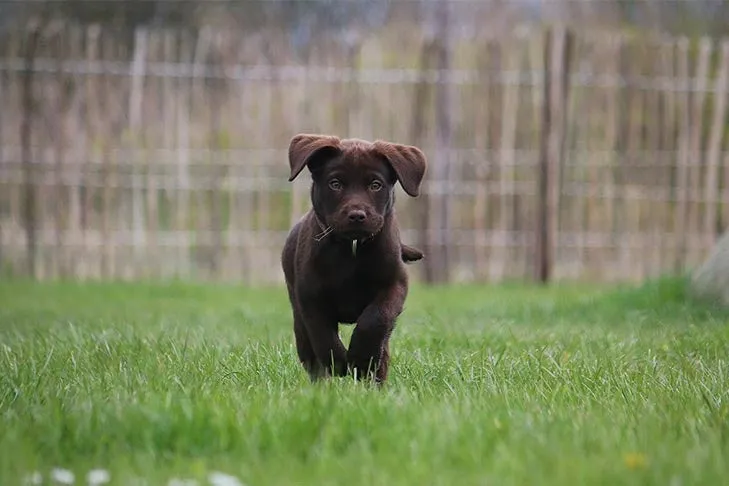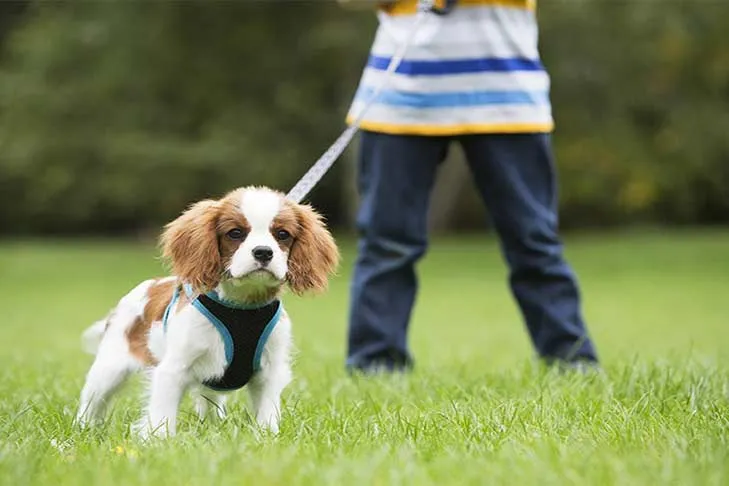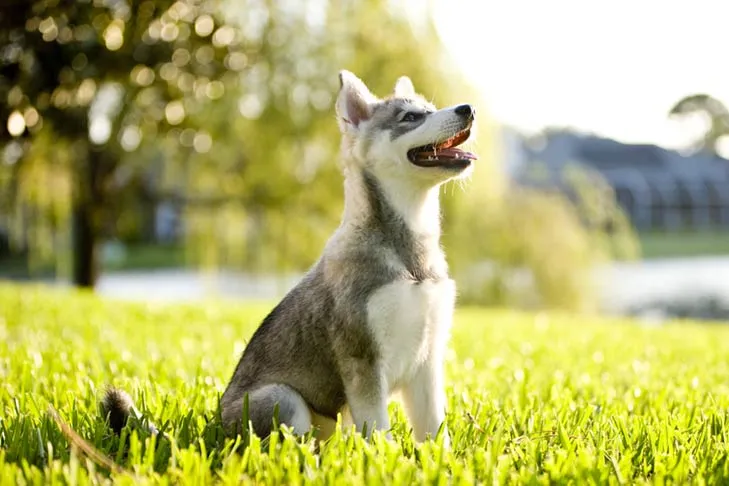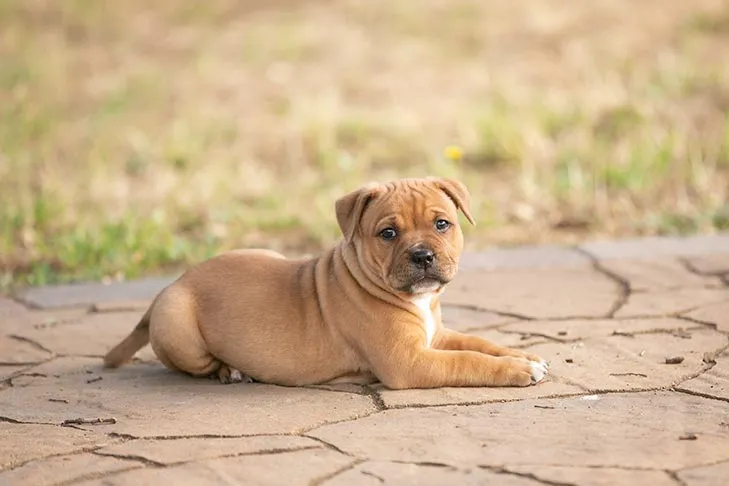Embarking on the journey of dog ownership is an exciting adventure, and a crucial first step is mastering Basic Command Training For Dogs. This foundational training not only helps your puppy integrate smoothly into your home but also builds a strong, trusting bond between you and your canine companion. By establishing clear expectations and using effective training methods, you’ll equip your puppy with essential skills that will benefit them throughout their life, ensuring they grow into well-behaved and confident adults.
When approaching puppy training, it’s vital to keep sessions concise and always conclude on a positive note. If your puppy seems to struggle or acts “stubborn,” re-evaluate your approach. Consider if you need to simplify the steps or offer higher-value rewards for challenging exercises. Remember, patience and consistency are your best allies in this process. The “Basic 5” commands — Come, Loose-Leash Walking, Sit, Down, and Stay — form the bedrock for any future advanced training, potentially even paving the way for obedience championship titles.
Establishing a solid foundation through basic command training is paramount for your puppy’s development and your shared future. It fosters a sense of security for your dog, knowing what is expected of them, and significantly enhances communication between you. For those seeking structured guidance, resources like basic dog obedience training near me can provide valuable local support and expert insights into tailoring these methods to your specific needs.
Getting Started with Effective Basic Command Training
The cornerstone of successful basic command training for dogs lies in positive reinforcement. This method involves rewarding your dog for performing desired behaviors, thereby encouraging them to repeat those actions. It’s about training through motivation rather than bribery, using something your dog genuinely values to reinforce good choices.
It is crucial to steer clear of punitive methods, such as leash corrections or yelling. Punishment can lead to confusion, fear, and a breakdown of trust, making your dog uncertain about what is being asked. Understand that dogs cannot be expected to know what they haven’t been taught; just as a child learns, so too must a puppy. A calm, patient approach will yield far better results and strengthen your relationship.
Rewards can take many forms, depending on what motivates your dog. High-value food treats, such as small pieces of freeze-dried liver or even their regular kibble, are commonly used for training. Lavish praise delivered in a happy tone, or a chance to play with a favorite toy, can also be powerful motivators. Dogs learn to appreciate verbal praise when it’s consistently paired with tangible rewards. Some dogs also enjoy petting as a form of reinforcement.
Puppies can begin simple basic command training for dogs as early as 8 weeks old, right after they settle into their new home. Always keep training sessions brief, ideally five to ten minutes long. Ending each session positively is key. If your puppy is struggling with a new behavior, revisit a command they already know, reward them generously for success, and then conclude the session. This prevents boredom and frustration, which are counterproductive to learning.
 Happy Labrador puppy running outdoors after a successful basic training session
Happy Labrador puppy running outdoors after a successful basic training session
Teaching Essential Basic Commands
How to Teach a Dog to Come When Called (Recall)
A reliable recall is one of the most vital basic command training for dogs skills, ensuring your dog’s safety and your peace of mind. Begin teaching “come” in a quiet, distraction-free indoor environment.
- Introduce the Cue: Sit with your puppy and say their name followed by “come.” Immediately give them a treat. Repeat this several times without requiring any action from them initially. The goal is to create a positive association with the word.
- Associate with Movement: Drop a treat on the floor near you. As soon as your puppy finishes it, say their name again. When they look up at you, give another treat. This links their name with attention.
- Increase Distance Gradually: Start tossing treats a little further away. Each time they finish the treat and turn to face you when you say their name, reward them. If they don’t respond, move closer and go back to a step where they can succeed. Avoid repeating their name excessively, as this can teach them to ignore it.
- Add Movement and Fun: Once they consistently turn to you, make it a game! Toss a treat, take a few quick steps away while calling their name. Most puppies will enthusiastically chase you, associating “come” with fun.
- Generous Rewards: When they catch up to you, offer enthusiastic praise, multiple treats, or engage in a quick play session with a favorite tug toy. Coming to you must be the most rewarding activity.
- Progress to New Environments: Gradually extend distances and introduce new, safe, enclosed training locations. When practicing outdoors, a long leash can provide security as they learn.
When your puppy successfully comes to you, avoid reaching out and grabbing them, which can be startling. Instead, kneel down, face sideways (less intimidating), and offer treats as you gently reach for their collar.
 Cavalier King Charles Spaniel puppy responding to a basic 'come' command on a long leash
Cavalier King Charles Spaniel puppy responding to a basic 'come' command on a long leash
How to Master Loose-Leash Walking
Teaching your dog to walk politely on a loose leash is another fundamental aspect of basic command training for dogs. While formal “heel” in competition obedience requires precise positioning, for puppies, the primary goal is walking without pulling. You can choose a cue like “let’s go” or “forward” – consistency is key. Whether you prefer them on your left or right, stick to that side to prevent confusion.
- Leash Comfort: First, ensure your puppy is comfortable wearing a leash. This can feel strange initially, and some puppies might try to bite it. Offer treats each time you put the leash on to create a positive association.
- Start Stationary: Stand next to your puppy with the leash forming a loose loop. Reward them with several treats for simply standing or sitting calmly by your leg.
- One Step Forward: Take one step forward. As your puppy follows and catches up, immediately give another treat.
- Continuous Rewards: Continue walking, giving treats consistently at your knee or hip level as they walk beside you.
- Address Pulling: If your puppy pulls ahead, simply change direction. Call them to you, reward them for returning to position, and then resume walking. Gradually increase the interval between treats (e.g., every step, then every other step, etc.).
- Sniffing Breaks: Allow your dog ample time to explore and sniff during walks. After their sniffing time, use your chosen cue like “Let’s go!” in an upbeat voice, rewarding them for returning to position and walking politely.
Eventually, your dog will happily walk by your side on a loose leash, making walks enjoyable for both of you. Many owners find professional assistance for this command especially useful. Searching for [basic obedience dog training near me](https://dogcarestory.com/basic-obedience-dog-training-near-me/) can connect you with experienced trainers who can refine this crucial skill.
How to Teach a Dog to Sit
Teaching your dog to “sit” is a classic and versatile command in basic command training for dogs. There are two effective methods: capturing and luring.
Method 1: Capturing the Behavior
- Observe and Reward: Stand in front of your puppy with treats. Wait patiently for them to naturally sit on their own.
- Mark and Treat: The moment their bottom touches the ground, say “yes” or click a clicker, and immediately give a treat.
- Encourage Repetition: Step backward or sideways to encourage them to stand up, then wait for them to sit again. Reward instantly.
- Add the Cue: After several successful repetitions, begin saying “sit” just as your puppy starts the sitting motion.
Method 2: Luring with a Treat
- Position the Lure: Get down to your puppy’s level, holding a high-value treat as a lure.
- Guide the Movement: Place the treat directly in front of their nose, then slowly lift it up and slightly back over their head. As they follow the treat with their nose, their rear will naturally lower into a sit.
- Reward: As soon as their bottom touches the ground, allow them to eat the treat.
- Fade the Lure: After one or two repetitions with the food lure, remove the food and use just your empty hand to guide the motion. Continue to reward them after they sit.
- Add the Cue: Once they understand the hand signal, start saying “sit” right before you give the hand signal.
Never physically push or force your puppy into a sitting position, as this can be confusing, uncomfortable, or even frightening for them.
 Alert Alaskan Klee Kai puppy sitting calmly in the grass, demonstrating good basic obedience training
Alert Alaskan Klee Kai puppy sitting calmly in the grass, demonstrating good basic obedience training
How to Teach a Dog to Lie Down
The “down” command is another fundamental component of basic command training for dogs, often taught similarly to “sit.” It’s an excellent command for promoting calmness and control.
Method 1: Capturing the Behavior
- Wait for the Action: Find a quiet, low-distraction environment, perhaps a small room like a bathroom. Wait for your dog to naturally lie down.
- Reinforce: As soon as they lie down, mark the behavior (with “yes” or a clicker) and reinforce with a treat.
- Release and Repeat: Give a release cue (e.g., “stand up” or “free”) to encourage them to get up, perhaps using a lure if needed. Then wait for them to lie down again, and reinforce.
- Add the Cue: Once they are quickly lying down after standing, begin saying “down” just before they start the action.
Method 2: Luring with a Treat
- From Sit or Stand: Hold a treat at your dog’s nose level. Slowly move it down towards the floor and slightly away from them, guiding their head down and forward.
- Reward Initial Contact: Reward the treat the moment your dog’s elbows touch the floor.
- Full Down: After a few practices, continue moving your empty hand to the floor. Reward only after they are in a full down position.
- Add the Cue: Once they reliably follow your hand signal, start saying “down” as you move your hand.
As with “sit,” never use physical force to put your dog into a down position. This can create negative associations and resistance.
 Staffordshire Bull Terrier puppy comfortably lying down outdoors after mastering the 'down' command
Staffordshire Bull Terrier puppy comfortably lying down outdoors after mastering the 'down' command
How to Teach a Dog to Stay
The “stay” command is an advanced basic command, requiring your dog to remain in a specified position (usually sit or down) until you give a release word. It’s a duration-based behavior that teaches self-control and patience.
- Teach the Release Word First: Choose a consistent release word like “OK” or “free.” Place your puppy in a sit or stand. Toss a treat on the floor and simultaneously say your release word as they step forward to get it. Repeat this until they associate the word with moving to get a reward.
- Introduce “Stay” (Short Duration): With your dog in a “sit,” turn to face them and give a treat. Pause for a second, then give another treat for staying in the sit, and then release them. Gradually increase the pause duration between treats. You can silently count or sing the alphabet to help track time.
- Troubleshooting: If your dog breaks the stay before the release cue, it means the duration was too long. Simply go back to a shorter, easier time where they can succeed.
- Add Distance Gradually: Once your dog can stay for several seconds, begin adding distance. Place them in a “sit,” say “stay,” take one step back, then immediately step back to your puppy, give a treat, and your release word.
- Increase Challenge: Continue building steps and distance, always keeping it easy enough for your dog to succeed. Practice with you facing them and with your back turned, mimicking real-life scenarios.
The key to successful “stay” training, like all basic command training for dogs, is not expecting too much too soon. Break down goals into small, achievable increments. Short, successful training sessions are paramount for long-term retention and a happy, well-trained dog.
Key Takeaways for Successful Basic Command Training
Successful basic command training for dogs is built on patience, positive reinforcement, and consistency. Remember that every puppy learns at their own pace, and setbacks are a normal part of the process. By keeping training sessions short, fun, and ending on a high note, you reinforce positive associations with learning and strengthen the bond with your furry friend. Focus on the foundational “Basic 5” commands – Come, Loose-Leash Walking, Sit, Down, and Stay – as these are crucial for your dog’s safety, manners, and overall well-being.
Embrace the journey of teaching your dog these essential life skills. The effort you invest in early training will pay dividends in a happy, confident, and well-behaved companion for years to come.
